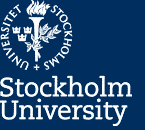
“My project’s aim is to illustrate how objects from seemingly unrelated areas – particularly across geometry – are generated by groups. The Wallenberg fellowship will allow us to bring together young researchers from several such areas. We hope that the interaction between their expertise specific to such an area and our overarching global vision of the project will lead to its success”, says Wushi Goldring, Department of Mathematics, Stockholm University.
Simply put, group theory is the language of symmetry – from symmetry of “local” objects like triangles, all the way to the symmetry of all of space. Since the development of group theory began around two hundred years ago, it has contributed to many important advances in mathematics and has been an invaluable tool in the development of quantum theory, which revolutionized physics in the 20th century. Group theory is also used in chemistry to model molecules and develop the understanding of systems in molecular biology, for example.
“I am very happy, grateful and honoured to become a Wallenberg Academy Fellow. Thanks to the hiring of new colleagues and their efforts over the past few years, the mathematical community in Stockholm has witnessed significant growth in depth and breadth of research and collaboration across different fields – and illustrated the potential for more to come”, Wushi Goldring says.
“The Wallenberg fellowship will significantly increase our research time over several years, thus providing excellent conditions to focus on the broader long-term term goals of our proposal. In this way, we look forward to injecting further energy and diversity into our already vibrant community in Stockholm.”
During his Wallenberg Academy Fellowship Wushi Goldring will continue to study the significance of group theory in geometry. Is it possible to describe more geometric objects using group theory than was previously believed? The aim is to develop a general theory that explains which geometric objects can be generated by groups and why.



